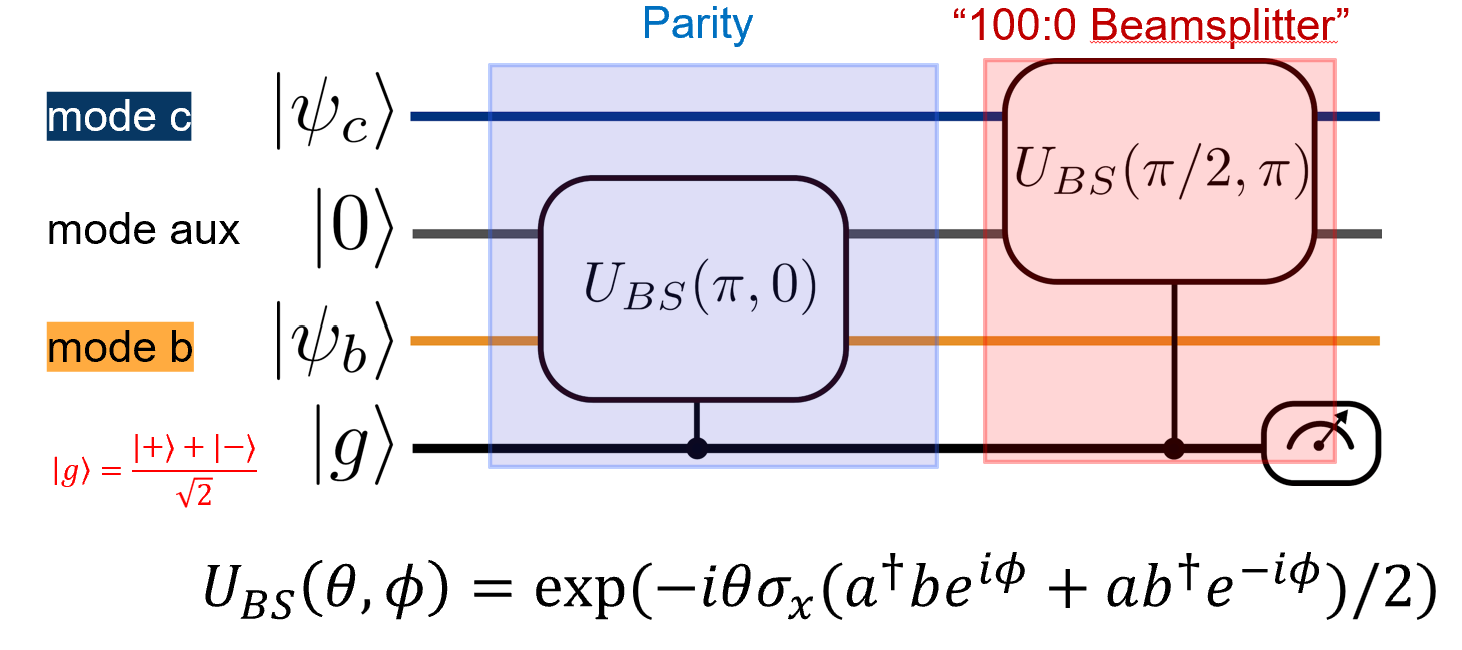Dzmitry Matsukevich's Group |

|
A conventional ion trap quantum processor stores and processes information using qubits -- two level quantum systems encoded in the internal quantum states of the trapped ions and uses common motional modes of the trapped ion to enable interactions between these modes.
Our group explores an alternative hybrid approach where quantum information is encoded in the states of harmonic oscillators, represented by the motional modes of the trapped ions, and internal states of the ion are used to enable interaction between the modes. Since the harmonic oscillators have, in principle, an infinite number of energy levels, such a scheme is more hardware efficient and operates larger Hilbert space compared to qubit only processors.
A building block of our approach is a control beamsplitter gate that applies a beamsplitter transformation to two harmonic oscillators (similar to a beam splitter in quantum optics) conditional on a state of a control qubit[1]. We use combination of two such gates to implement a control-SWAP test that measures an overlap between two quantum states of harmonic oscillators[2] and employ this test as a subroutine for quantum machine learning algorithms that work on quantum data and classify states of a harmonic oscillator[3].

Fig. 1. A combination of two controlled beamsplitter gates implements a SWAP test and allows measurement of an overlap between two quantum states encoded in modes b and c [2,3].